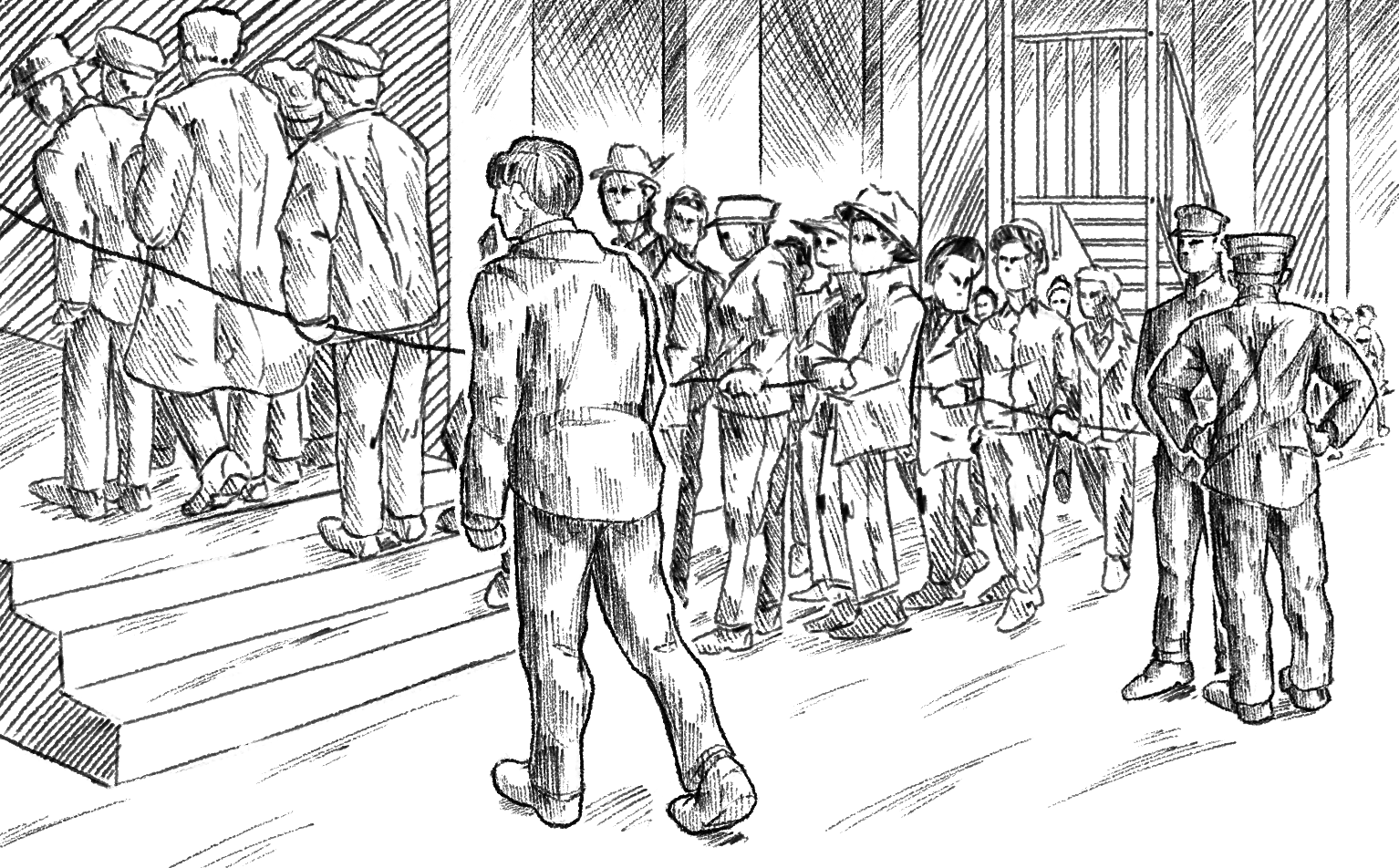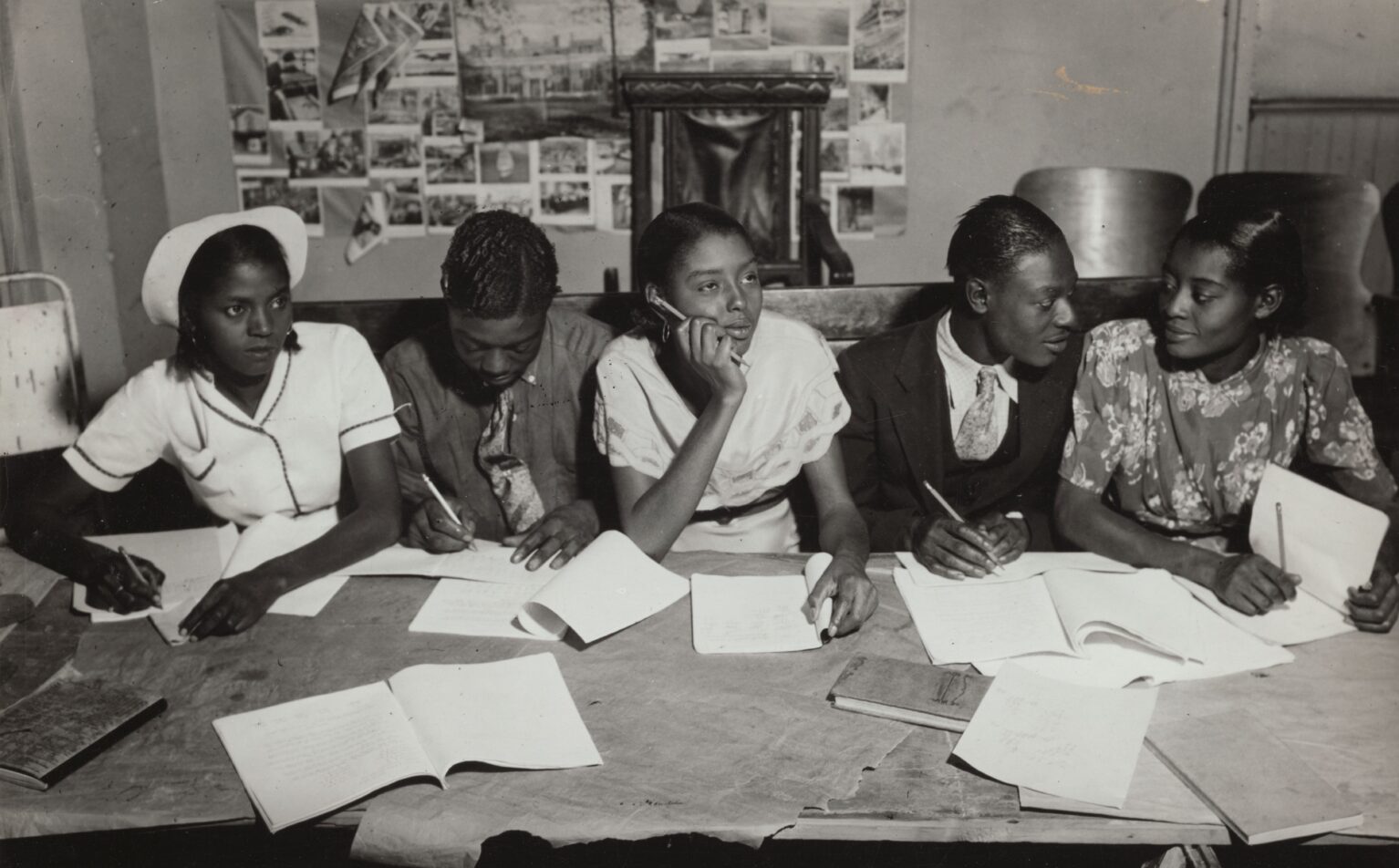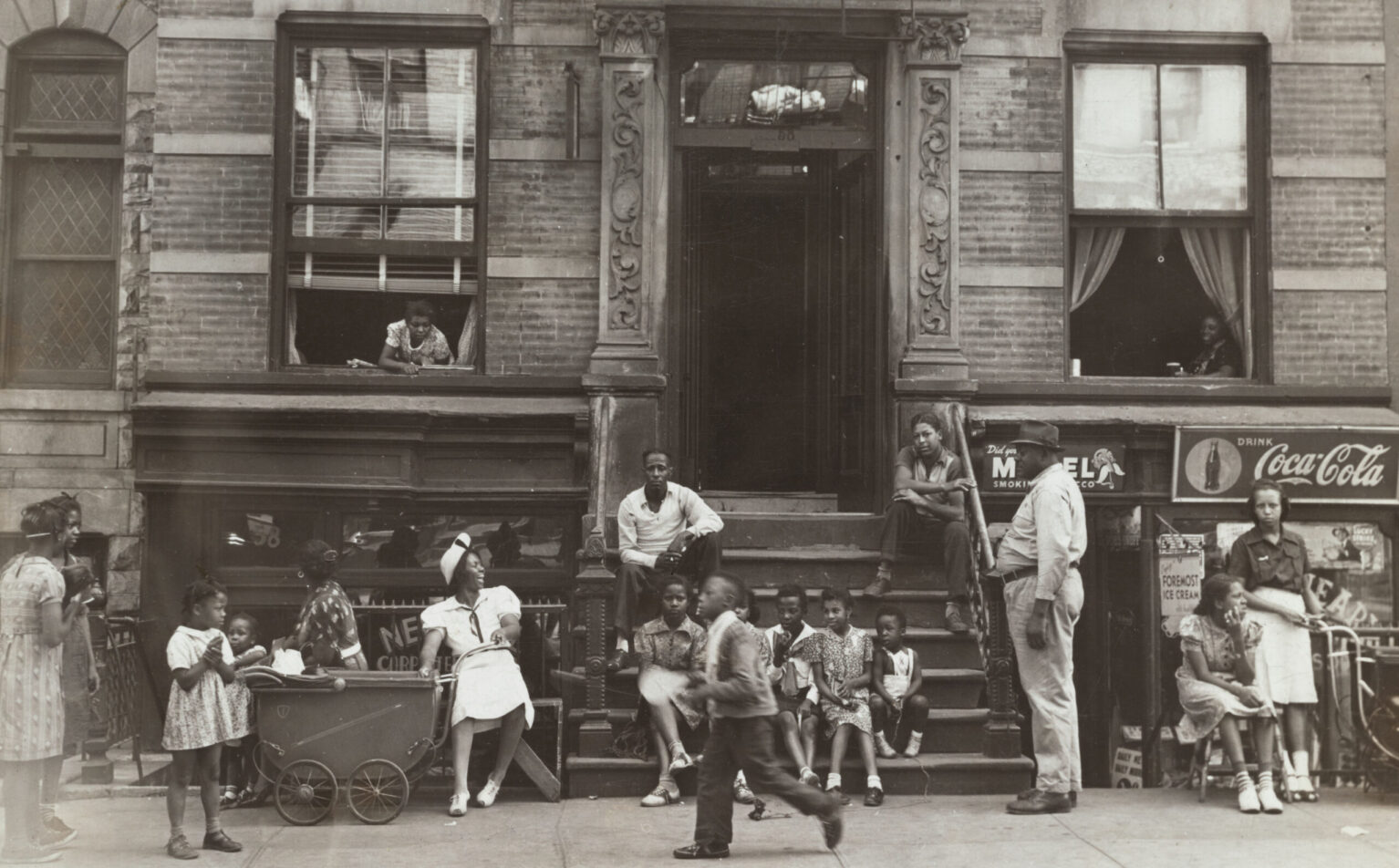


Newsreel footage of Harlem from the morning of March 20, 1935. Courtesy Footage Farm.
The Report on Conditions in Harlem was written in 1936. It discusses sensitive topics and uses language from that time that is outmoded and insensitive today. The organizers of the 2022 convening aim to have the materials provided on the website shine a light on the social and economic conditions present in Harlem both in 1935 and the present.
For consistency only, the website uses direct quotes from the report. We retain historical integrity by preserving the cultural and historical themes of the period. Some information and text on this website might be disturbing; your discretion is advised in viewing it.
The graphics scattered throughout are a visual representation of moments depicted in the report. The photographs of Harlem connect to the events described in the report or were taken in the same time period and help add context to the topics.
In the wake of a uprising in March 1935, New York City Mayor Fiorello LaGuardia appointed a ten-member Commission to research conditions in Harlem, a geographic and cultural center of Black life. The Commission contracted with noted sociologist E. Franklin Frazier to conduct studies and draft its eventual report. The Commission held multiple hearings at which 160 witnesses testified. Unlike many government hearings, the audience was permitted to directly question, and sometimes contradict, the witnesses.
The end result was a 118-page report, plus appendices, submitted to the Mayor but never issued by City government. The New York Amsterdam News did publish the report which included chapters on the events of March 19, 1935, the Commission and Public Hearings, The Problem of Making a Living, the Relief Situation, the Housing Problem, the Problem of Education and Recreation, Health and Hospitalization, Crime and the Police, and Conclusions and Recommendations.
Today, NYC Speaks is an epic effort to bring together tens of thousands of New Yorkers from all walks of life to inform the priorities and policies of Mayor Eric Adams, his administration, and the future of New York City. This network of civic and community partners is invested in building a better city by amplifying the voices of New Yorkers on issues, strengthening neighborhoods by supporting community institutions, especially in Black and brown communities, and making good on the promise of democracy by creating opportunities for people to hold government accountable.
There is substantial overlap in the topics covered by the 1935 Commission and the 2022 NYC Speaks project. Participants in the convening will discuss historical and current issues and then propose strategies for addressing them.